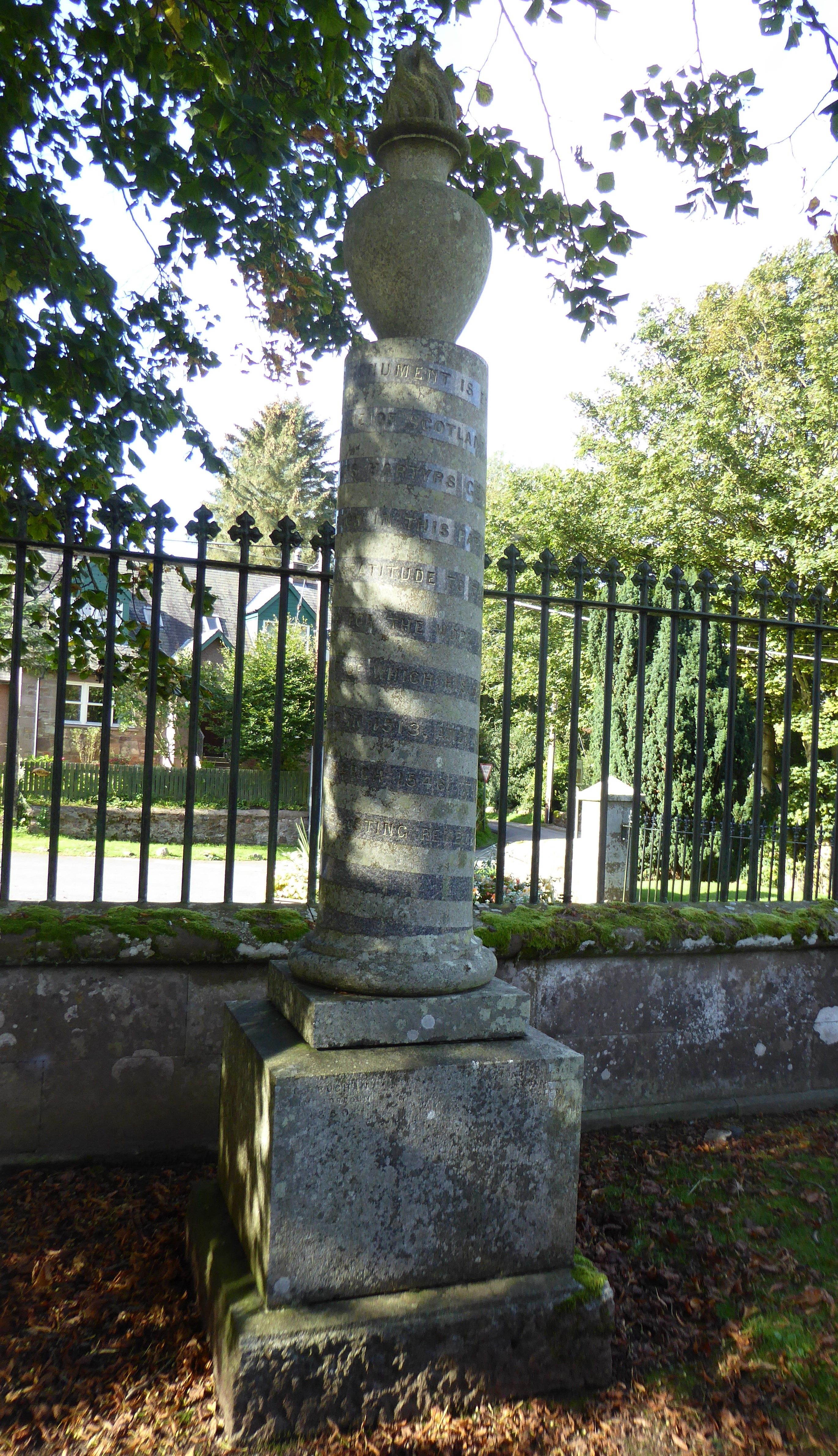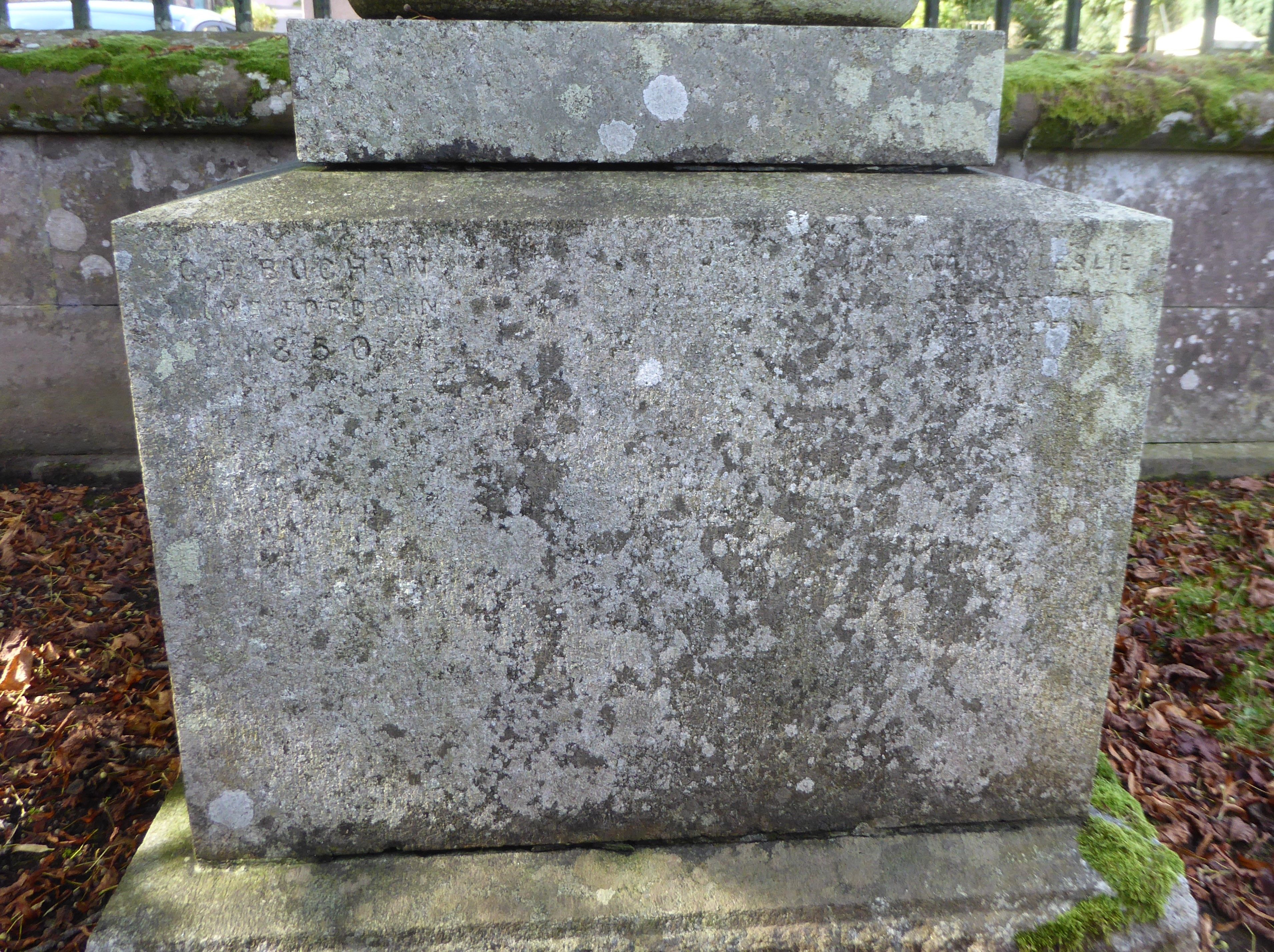(Jervise, Vol 1, p 64)
See: http://redbookofscotland.co.uk/wishart-of-pittarow & Wikipedia
Executed at Saint Andrew's Castle.∼Brief On The Martyrdom of George Wishart
George Wishart was born in 1513 in Scotland. It is thought that he graduated at King's College in Aberdeen, Scotland in 1531. He taught New Testament Greek as schoolmaster of Montrose until he was investigated for heresy by the Bishop of Brechin in 1538. He escaped to England, but was soon brought up on charges once again for teaching heresy. He may have visited Germany and Switzerland in 1539 and 1540. In 1542 he studied and taught at Corpus Christ College in Cambridge, England. In 1544 he traveled into Scotland teaching and doing some itinerant preaching. One of his followers was a young man by the name of John Knox. As he went about from place to place denouncing the papacy, Knox and others grew in their resistance to the Church's dominance. In January, 1545 he was seized and arrested by the order of Cardinal David Beaton. He spent some time in the dungeons of Edinburgh Castle. Finally Beaton had Wishart brought to St. Andrews where he was burned at the stake on March 1, 1545. The following description was recorded in Foxe's Book of Martyrs. In Chapter 15, entitled, An Account Of The Persecutions in Scotland During The Reign of King Henry VIII, it was written: The hangman, that was his tormentor, sat down upon his knees, and said, "Sir, I pray you to forgive me, for I am not guilty of your death." To whom he answered, "Come hither to me." When that he was come to him, he kissed his cheek, and said: "Lo, here is a token that I forgive thee. My heart, do thine office." And then he was put upon the gibbet and hanged, and burned to powder. When that the people beheld the great tormenting, they might not withhold from piteous mourning and complaining of this innocent lamb's slaughter. It was not long after the martyrdom of this blessed man of God, Master George Wishart, who was put to death by David Beaton, the bloody archbishop and cardinal of Scotland, A.D. 1546, the first day of March, that the said David Beaton, by the just revenge of God's mighty judgment, was slain within his own castle of St. Andrews, by the hands of one Leslie and other gentlemen, who, by the Lord stirred up, brake in suddenly upon him, and in his bed murdered him the said year, the last day of May, crying out, "Alas! alas! slay me not! I am a priest!" And so, like a butcher he lived, and like a butcher he died, and lay seven months and more unburied, and at last like a carrion was buried in a dunghill. The last who suffered martyrdom in Scotland, for the cause of Christ, was one Walter Mill, who was burnt at Edinburgh in the year 1558. It should be observed that the location of the burning of George Wishart is also the birthplace of the Protestant Church of Scotland, under the leadership of Wishart's follower and friend, John Knox.
For photos and more information, go to Scott Harp's site.
This is a cenotaph. View burial and family links at ACTUAL BURIAL HERE.
(Jervise, Vol 1, p 64)
See: http://redbookofscotland.co.uk/wishart-of-pittarow & Wikipedia
Executed at Saint Andrew's Castle.∼Brief On The Martyrdom of George Wishart
George Wishart was born in 1513 in Scotland. It is thought that he graduated at King's College in Aberdeen, Scotland in 1531. He taught New Testament Greek as schoolmaster of Montrose until he was investigated for heresy by the Bishop of Brechin in 1538. He escaped to England, but was soon brought up on charges once again for teaching heresy. He may have visited Germany and Switzerland in 1539 and 1540. In 1542 he studied and taught at Corpus Christ College in Cambridge, England. In 1544 he traveled into Scotland teaching and doing some itinerant preaching. One of his followers was a young man by the name of John Knox. As he went about from place to place denouncing the papacy, Knox and others grew in their resistance to the Church's dominance. In January, 1545 he was seized and arrested by the order of Cardinal David Beaton. He spent some time in the dungeons of Edinburgh Castle. Finally Beaton had Wishart brought to St. Andrews where he was burned at the stake on March 1, 1545. The following description was recorded in Foxe's Book of Martyrs. In Chapter 15, entitled, An Account Of The Persecutions in Scotland During The Reign of King Henry VIII, it was written: The hangman, that was his tormentor, sat down upon his knees, and said, "Sir, I pray you to forgive me, for I am not guilty of your death." To whom he answered, "Come hither to me." When that he was come to him, he kissed his cheek, and said: "Lo, here is a token that I forgive thee. My heart, do thine office." And then he was put upon the gibbet and hanged, and burned to powder. When that the people beheld the great tormenting, they might not withhold from piteous mourning and complaining of this innocent lamb's slaughter. It was not long after the martyrdom of this blessed man of God, Master George Wishart, who was put to death by David Beaton, the bloody archbishop and cardinal of Scotland, A.D. 1546, the first day of March, that the said David Beaton, by the just revenge of God's mighty judgment, was slain within his own castle of St. Andrews, by the hands of one Leslie and other gentlemen, who, by the Lord stirred up, brake in suddenly upon him, and in his bed murdered him the said year, the last day of May, crying out, "Alas! alas! slay me not! I am a priest!" And so, like a butcher he lived, and like a butcher he died, and lay seven months and more unburied, and at last like a carrion was buried in a dunghill. The last who suffered martyrdom in Scotland, for the cause of Christ, was one Walter Mill, who was burnt at Edinburgh in the year 1558. It should be observed that the location of the burning of George Wishart is also the birthplace of the Protestant Church of Scotland, under the leadership of Wishart's follower and friend, John Knox.
For photos and more information, go to Scott Harp's site.
This is a cenotaph. View burial and family links at ACTUAL BURIAL HERE.
Inscription
This monument is erected to the memory of one of Scotland's first & most illustrious martyrs, GEORGE WISHART of Pittarrow in this parish and as a testimony of gratitude to the great Head of the Church for the work of the Reformation on behalf of which his servant suffered. He was born in 1513 & was burned at St. Andrews 1st March 1546. The righteous shall be in everlasting remembrance.
Advertisement
Advertisement





